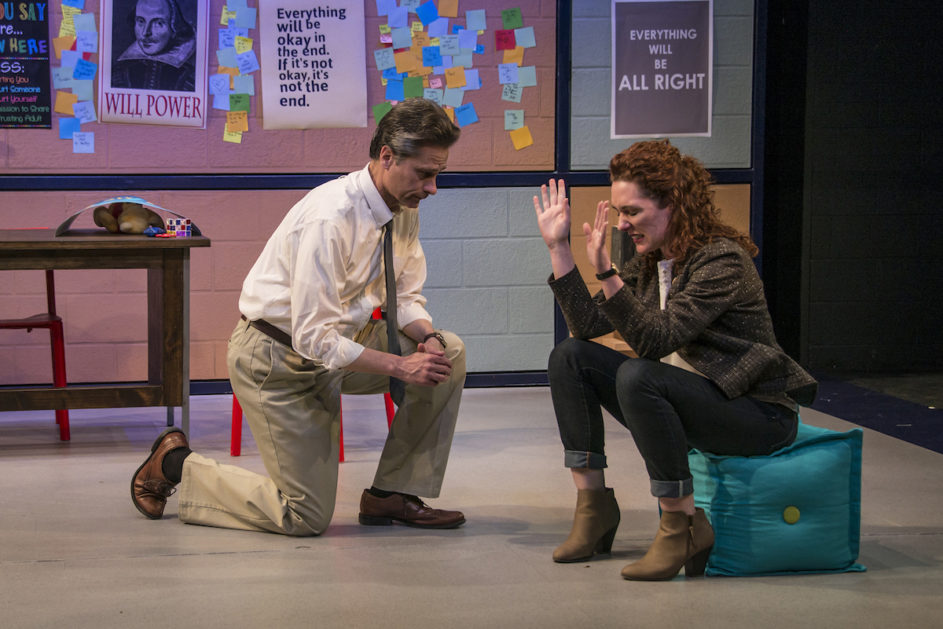In David West Read’s intriguing first play, “The Dream of the Burning Boy,” written in 2010, high school English professor Larry Morrow, played with taunt care by Terry Weber, mostly lives a tightly regimented life of the mind.
At the moment he is trying to help his students make sense of the circular levels of Dante’s “Divine Comedy,” the medieval allegorical poem about the soul’s journey to find God. But as he paces in his classroom, his movement pattern is in sharply cornered geometry. It’s a kind of visual definition of his own soul’s journey that had an abrupt carnal turn. It haunts him.
One of Morrow’s current students, Dane (Ben Terpstra) is his son that he thinks no one other the Dane’s otherwise-married mother, Andrea (Katie Cunningham), knows about, born from a chance encounter 16 years earlier.
But this year, Dane is one of Morrow’s students and his only close contact with the boy is asking him to come to his room after school to discuss the boy’s class assignments. But Dane’s sudden death, early in the play, in the hallway after leaving Morrow’s room, suddenly ends those opportunities.
What everyone else: Dane’s sister Rachel (Alyssa Miller); Dane’s friend Kyle (Brady Moldrup); his girlfriend Chelsea (Chauncey Whitlock); and the guidance counselor Steve (Mark Jennings) really knew about the connection between Morrow and Dane, as well as their own relationships with Dane in their interconnected, private circular levels, is revealed in the rest of the play.
It’s a uniformly good cast. Each revealing their own personal makeup and interpersonal connections with alternating psychological detachment and emotional intensity.
These dynamics are highlighted by scenic designer Jelena Andzic’s set of a moveable wall that changes from one room to another, with rotating segments of the flat wall that flip back and forth. Similarly, the same pieces of furniture: a desk and chairs, change positions depending on the room in the scene.
Read takes many of the details in his story directly from a story in Sigmund Freud’s seminal book “Interpretation of Dreams,” published in 1900. Read’s title comes directly from Freud’s recounting of a dream told to him by one of his patients.
In the patient’s dream, a father has been watching and caring for his ill son. After the child dies, the father goes into the next room to get some much-needed rest and sleep. He asks an old man to sit with the boy’s body. The boy’s room is lit by candles.
The father has a dream that the boy comes in and shakes him awake, saying “Father, can’t you see that I am burning.” The shock of the dream wakes the father. When he looks into the next room, he sees that the old man has fallen asleep and one of the candles has fallen onto the boy’s clothing, catching it on fire.
Read works many of the dream’s details in his play. They create multiple layers of meaning that flash like little lights in the back of your mind.
It’s an evening at the theatre that sticks with you.
“The Dream of the Burning Boy” continues through April 15. The Lab Theatre, where the production is staged, is a small room. Seating is limited. Call the Clarence Brown box office, 865-974-5161, for tickets.

